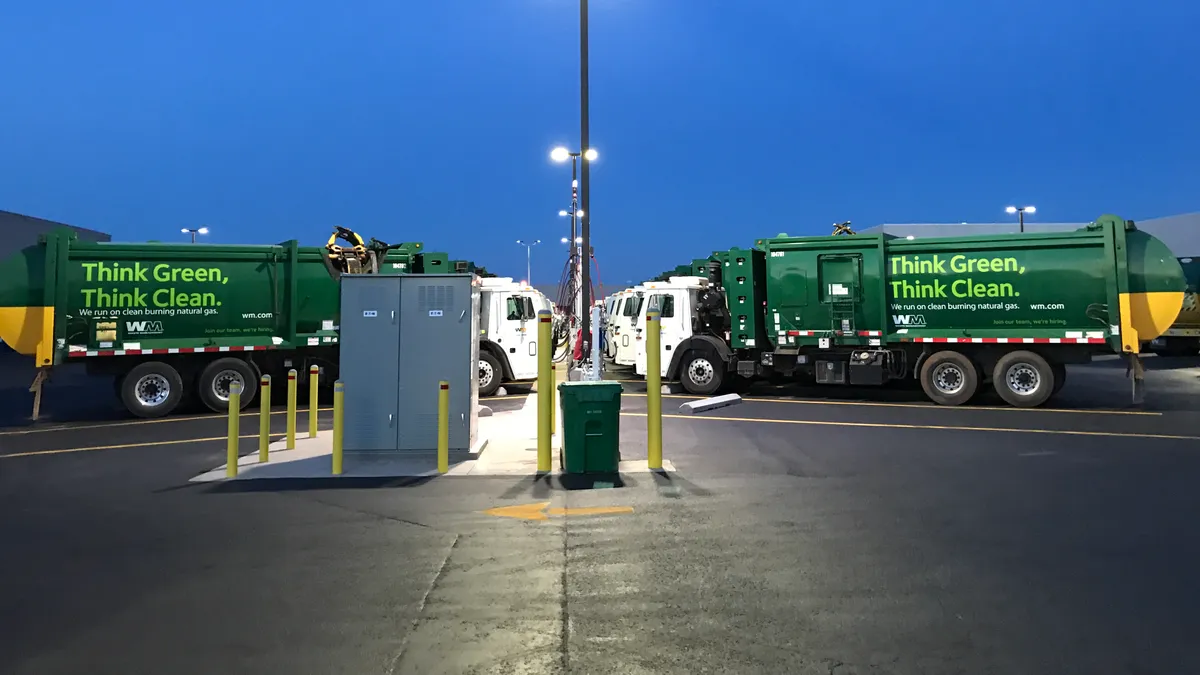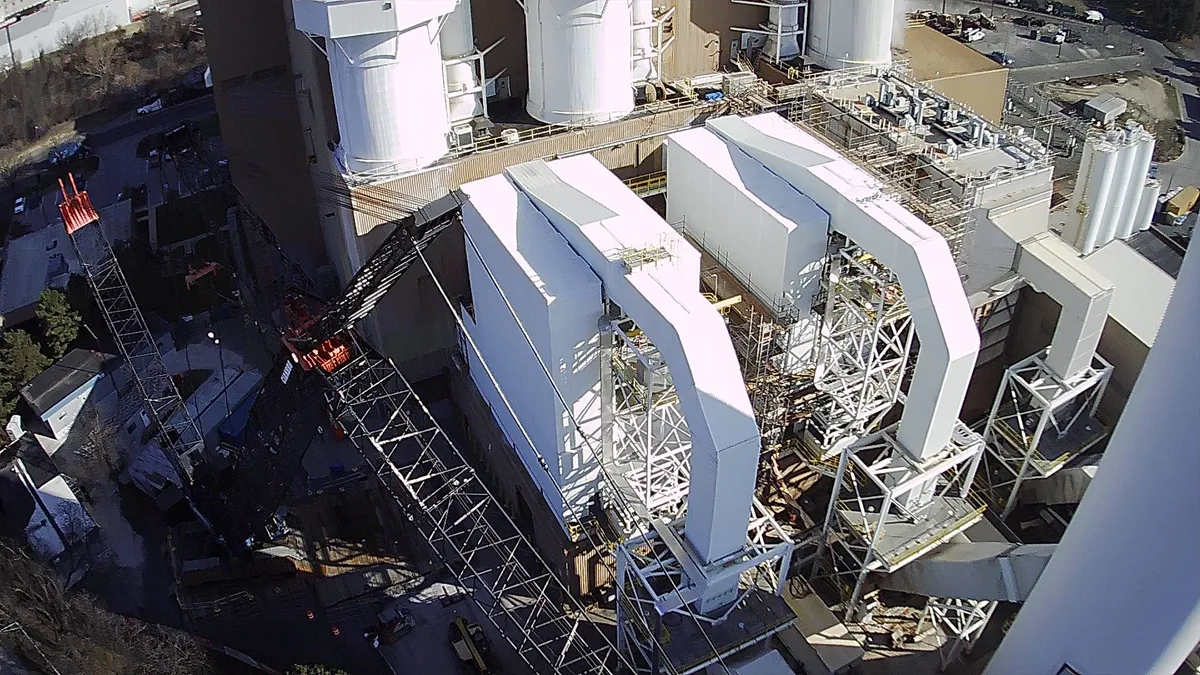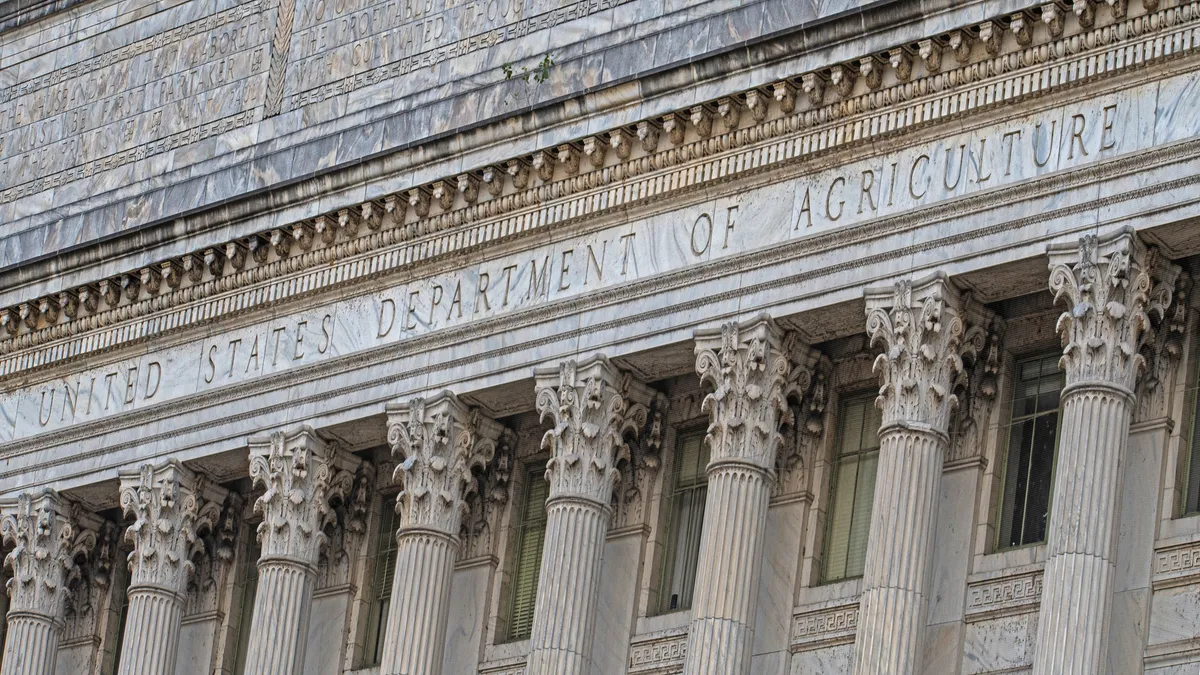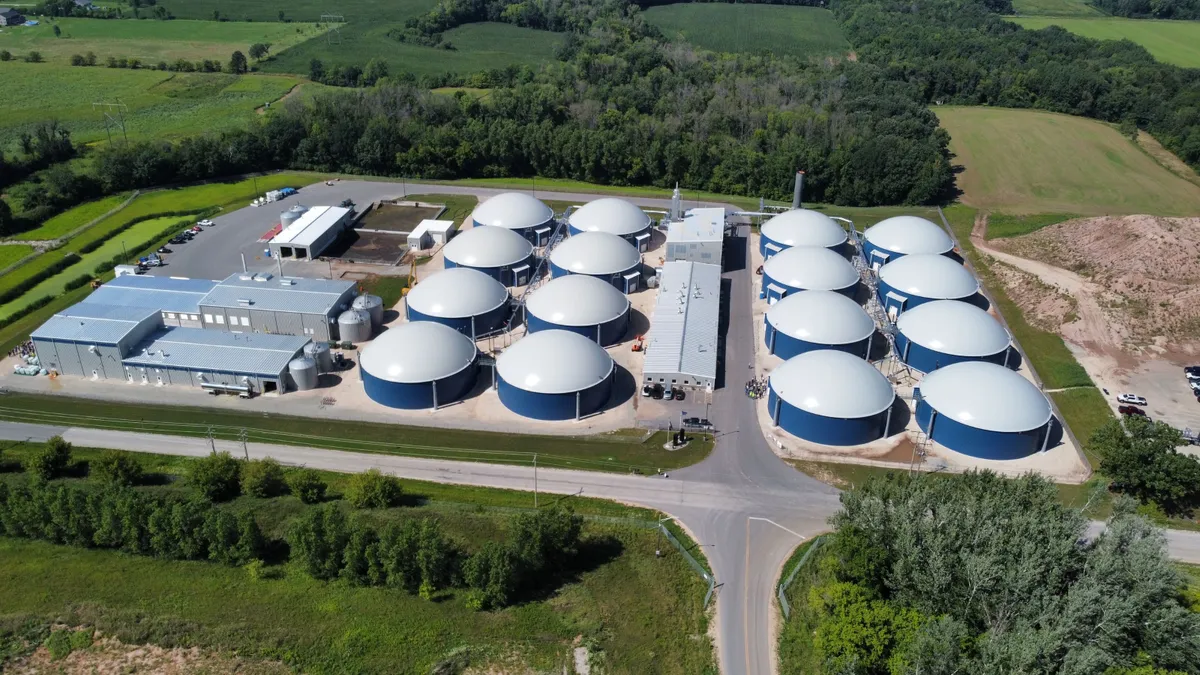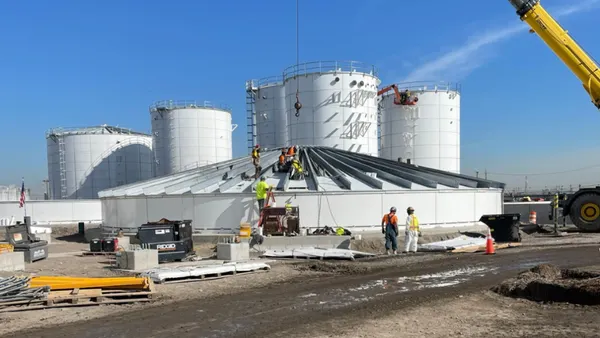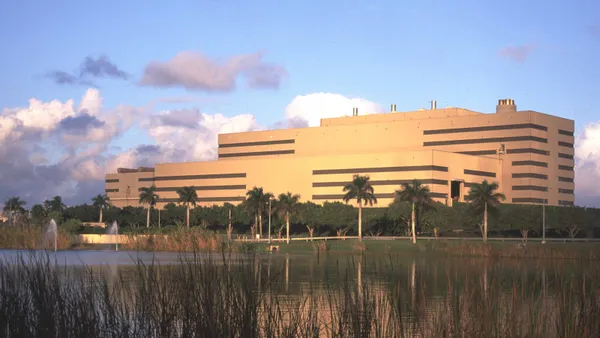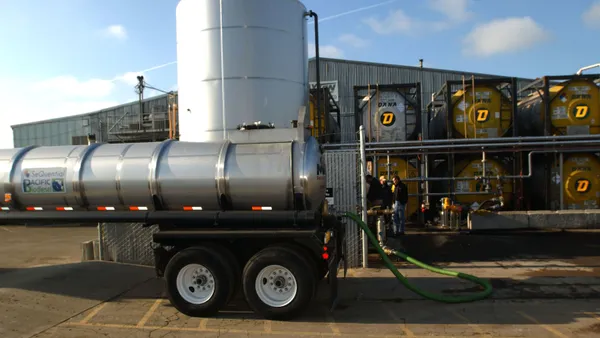WM has charted the course for a dramatic scale-up of its RNG business as a growing list of state and federal programs incentivize the production of the methane-derived fuel.
The waste major’s planned renewable natural gas facility buildout could net it $600 million in adjusted operating earnings before interest, taxes, depreciation and amortization in 2026, WM revealed during its annual Sustainability Investor Day presentation Wednesday. The investments are expected to generate $450 million in free cash flow in 2026, when the expansion is scheduled to be complete, and stabilize at or above $400 million in the following years.
During a question and answer session, WM CEO Jim Fish said that the company’s status as North America’s largest landfill operator isn’t a negative, but rather allows it to build a “highly profitable” and growing revenue stream for the company.
“Landfills are not only pretty valuable in terms of the public service we provide, but now they're almost becoming these energy production facilities,” Fish said during the presentation on Wednesday.
WM leaders said that adjusted operating EBITDA more than doubled after RNG facilities were installed at four sites in the past several years, and they anticipate an average increase of 50% to 75% at planned sites.
The 20 RNG facilities WM expects to build could provide enough revenue to supplant recycling as the waste major’s biggest cash flow driver in its sustainable business segment by next year, deriving new revenue from both open and closed landfills where gas either goes uncaptured or toward less profitable operations.
WM’s sustainability business segment made up less than 10% of its adjusted operating EBITDA earnings last year, but the company anticipates it could reach about 15% by 2026. The company’s RNG investments, coupled with continued investment in its recycling business, could propel the overall sustainability segment to roughly $840 million in earnings in 2026, according to internal projections.
The RNG investments would add an anticipated $500 million to the firm’s adjusted operating EBITDA. The portfolio would provide a further value of $70 million in EBITDA through the U.S. EPA’s proposed eRIN program, plus another $30 million from additional third-party deals to capture more gas at WM-owned landfill sites.
Much of that growth comes from the significant investments WM plans to make in RNG. The company plans to capture an additional 25 million mmBtus per year when its planned buildout is complete by 2026.
That growth will come with a significant capital investment. WM anticipates spending roughly $1.215 billion to build out its RNG portfolio from 2022 to 2025, with free cash flow in the category turning positive in 2025.
WM hired Shahid Malik, whose career previously centered on energy companies like Public Service Enterprise Group and South Jersey Industies, according to his LinkedIn profile, as a vice president to oversee its RNG scale-up. Malik said he sees the sector as one where demand will outpace supply for several years at least, and he believes WM is well positioned to sell the RNG it generates to the transportation and utility sectors.
WM expects to generate more RNG than it needs for its own CNG fleet by 2026. It’s also developed a risk management strategy — through which WM will contract out 70-90% of its RNG volume in any current year on fixed-price plans, 30-50% for the following year, and 10-30% for the third year — in order to manage price volatility while maximizing returns on the spot market.
“We are seeing clearly an increase in demand today and that will move much higher in the future,” Malik said.
Malik said the company also sees opportunity in the eRIN market. WM predicts that in the final rule, which is scheduled to go into effect next year, landfill operators would be able to recover about 25% of the value from RNG eRINs, though there may be upside going forward, Chief Sustainability Officer Tara Hemmer said.
Hemmer also said that WM’s portfolio of landfill gas-to-electricity facilities could generate eRIN revenue with no added capital expenditures as soon as the new framework goes into effect.
“This is a huge opportunity for us,” Hemmer said.
The Inflation Reduction Act may also offer upside for WM. The landmark climate package’s Investment Tax Credit program, which offers a discount of up to 30% on taxes for renewable energy projects like the ones WM and other waste companies pursue, could provide WM an additional $250 to $350 million in cumulative benefits.
The RNG plan as outlined Wednesday drew strong interest from investors during the call. Investment bank Jefferies Group, in a follow-on analysis, also noted that there was a potential for greater profits from eRINs or from the remaining 35% of natural gas generated by WM that won’t already be captured for beneficial use by 2026. Their analysts also noted that WM’s strategy of developing RNG facilities internally, rather than signing a development agreement like some of its competitors, makes sense for a company that has drawn scrutiny when attempting mergers and acquisitions.
Hemmer said the RNG investments will also contribute to the waste major’s goal to reduce Scope 1 and 2 emissions 42% by 2032. The company’s RNG investments, coupled with some additional landfill investment, are expected to reduce Scope 1 emissions by 20-30%, Hemmer said.
“The main lever for meeting our planned greenhouse gas emissions reduction is capturing more landfill gas, and by diverting it for beneficial use we generate more renewable energy revenue,” Hemmer said.



